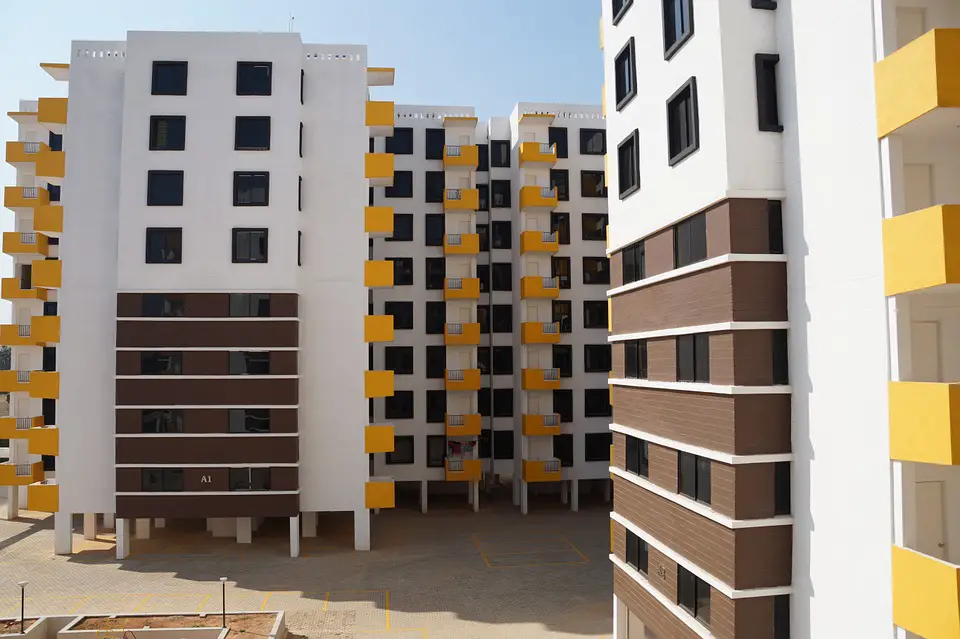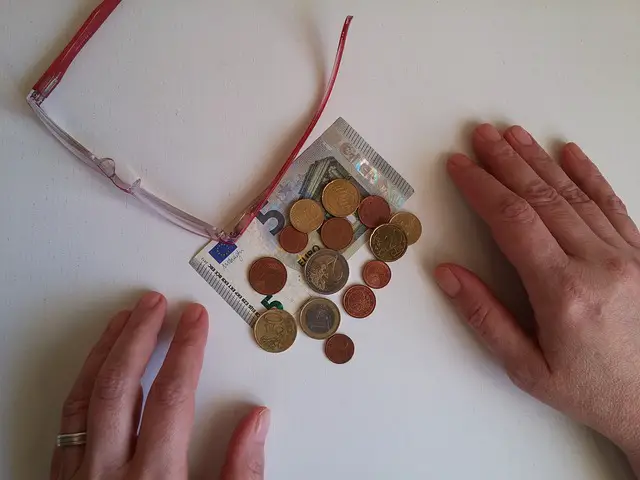After demonetization by the Government of India, all the banks have reduced their loan interest rates. This is the right time to buy your dream home. When SBI has cut the MCLR by 0.9%, everybody cheers in the market. Slowly all other banks followed the same principle. Many of home loaners also started enquiring about the MCLR. The certain question which appears in everyone’s mind is that MCLR vs base rate which is beneficial.RBI introduced the Marginal cost of Lending (MCLR) on April 1, 2016, and consistently pushed banks to follow MCLR instead of the base rate for the consumer loans. Banks are continuously guided by Reserve Bank of India (RBI) to apply this rate for their loan rate calculation.
Also Read: Five Reasons Why You Should Not Prepay Home Loan
The Government of India is also encouraging the housing sector with its various schemes under Pradhan Mantri Awas Yojana Scheme and also launched the Real Estate Regulatory Authority (RERA) for transparency.

What is Base Rate?
The base rate is the minimum interest rate at which bank gives the loan to the consumers. It depends on various factors such as deposit rate of banks, profit, the cost of banks etc. It is independent of repo rate of RBI. Bank can change base rate every quarter based on the repo rate changes.
What is MCLR?
When RBI is reducing the repo rate continuously, the banks are not passing the benefit to consumers as the calculation is different for different banks. Then RBI starts guiding the banks to calculate marginal cost of Lending rate (MCLR).
RBI also pushed the banks to adopt the MCLR in place of base rate to make the banking system more transparent. MCLR depends on the marginal cost of funds; cash reserve ratio (CRR), operating cost and tenor premium. MCLR can be different for the different tenure of the loan.
MCLR vs Base Rate:
Now we will know about the benefits, disadvantages of MCLR and Base Rate and should we switch our home loan from existing to MCLR basis. Where will we get the maximum benefit?
Consider an outstanding home loan of Rs 20, 00,000 based on base rate and taken before April 1, 2016. The SBI base rate was 9.55% for Men and 9.5% for Women before January 1, 2017.
Now, the SBI has slashed the MCLR and currently it is 7.95% (One-year MCLR). SBI charges 0.40% over MCLR which put the effective interest rate as 8.35%. This MCLR is applicable for new a loan which is taken after the effect of this new MCLR.
If you change the home loan to MCLR basis, the interest rate will certainly go down. You can get the benefit of this new MCLR by giving conversion fee to your bank. Bank generally charges 0.5% plus tax on outstanding home loan as conversion fee.
If you have taken home loan after April 1st, 2016 and it is already based on MCLR you have to pay the conversion fee to apply the new MCLR. Most of the individual can reduce their SBI home loan interest rate with the help of this conversion.
There is an annual reset clause of MCLR available with most of the banks. According to this rule, the interest rate of the home loan is to be reset every year on the basis MCLR available at that time. Suppose you have taken a home loan on April 2016 based on MCLR available that time. This rate will be reset on every year April with the applicable MCLR at that time.
State Bank of India, ICICI Bank and Bank of Baroda are the three banks who have reduced the MCLR drastically after demonetization. The other banks have also followed the same by reducing their MCLR. As an example, IDBI bank has now 6 months MCLR of 8.35% which is applicable to the home loan. Now their base rate is 9.5%. You will get an obvious benefit by changing the home loan to MCLR basis.
Now before switching your loan to MCLR, contact your bank, calculate the benefits of reduced EMI or tenure with respect to conversion fee and do your cost-benefit analysis and take decision accordingly. Here you can think of balance transfer your home loan to SBI, ICICI bank. In this case, you have to remember the processing or application fee of the new loan in SBI or ICICI bank. The foreclosure charges of the existing loan are also to be checked with the home loan provider.
Also Read: How to Transfer Home Loan to Another Bank and Should You Do It?
Example:
Suppose your outstanding home loan is Rs 20,00,000 for five years and you are paying Rs 20,000 as an EMI. The interest rate is 9.5% and if you change to MCLR basis it will be 9.1%.
Suppose your outstanding home loan is Rs 20,00,000 for five years and you are paying Rs 20,000 as an EMI. The interest rate is 9.5% and if you change to MCLR basis it will be 9.1%.
Take the conversion fee as 0.5% of outstanding amount = Rs 10,000
The EMI you will save is approx. Rs 40,000 on the fifth year. But you have to pay Rs 10,000 right now. So, we have to calculate the value of Rs, 10000 at fifth year.
Considering 8% interest rate per year the value of Rs 10,000 will be Rs 14,700 at the end of 5th year.
Hence, you can change your home loan to the MCLR basis in this case.
Your thoughts, comments on the article are welcome in the comment section below the article. I will love to hear from you. 🙂
Update: SBI has increased the MCLR by from 7.95% to 8.15% from 1st March, 2018. Even after increasing the MCLR, it is less than the base rate. Now, you have to take care or calculate the advantage of the difference in those two. Do your own calculation according to the sample calculation above and decide whether to change the loan from base rate to MCLR or not.




Hi,
I have SBI loan “SBI HL MAXGAIN OD(WOM-OCT15)” or 37lacs with 9.45% interest rate on March’ 2016. I would like to know, will my loan rates automatically reduces as its around 8% at the moment. If not, what should be the procedure and charges? Is there any benefit to move it to MCLR plan/any other plan?
-Thanks,
Hanee
The MCLR is applicable from Apri1, 2016. So, your loan is on base rate, i guess. You have to fill up a form to change your home loan to MCLR basis to the bank and you have to pay a conversion charge along with the form. The conversion fee is normally 0.5% of outstanding loan plus service tax though it may varies bank to bank.
Thanks Mr. Suman for the response. I can understand the process to make it converted into MCLR and bank is asking around 13K for transfer charges.
But my question is that, is there any benefit on long run to transfer and spend such amount of charges to bank.
-Hanee
The benefit is based on the balance tenure, outstanding amount and the conversion charges what you have to pay. Please follow the example and do a cost benefit analysis. If the conversion amount gives you the benefit in terms of tenure or lower EMI, you can convert the loan to MCLR basis.
Hi,
Impressed with your responses. I availed home loan of 20LKS for 15 years from LICHFL in Nov’2013 and EMI is costing 21667/- per month. Now the current outstanding is 18LKS. As the interest rates are reduced I planned to transfer home loan to SBI. My question is it good decision to for long tenure or short tenure?. If Yes Long Tenure EMI will come down to 17000/- for example. I would like to plan some savings with the difference amount. Kindly advise which is the best decision to take and savings options!!
I appreciate your query. It depends on the priority you give. If you want to be benefited financially, my suggestion would be to reduce the EMI. You cannot get a loan with such a cheaper interest rate and also take the benefit in income tax. Invest in an equity mutual fund with the balance amount and continue the loan. For more read the article Five Reasons Why You Should Not Prepay Home Loan.
Thank you very much!!!
Most welcome sir.
Hi,
I have Axis Bank Home Loan of 13,62000 with 9.15% Base interest rate on April’ 2017.
I would like to know, can I transfer my loan to Axis MCLR from Axis Base Interest Rate.
what should be the procedure and charges? Is there any benefit to move it to MCLR plan/any other plan?
-Thanks,
Vivek
First, you check the effective interest rate on your home loan based on MCLR. Banks normally charge spread over MCLR. Then calculate the benefit considering the effective interest rate. Take the balance tenure into your account. Banks normally charge 0.5% +service tax on the outstanding amount. Compare both the figures and take decision accordingly.
Thanks a lot dear for ur response…
I have a home loan with SBI of Rs.1400000/- . I am paying EMI of rs.15200/- . My loan tenure is 240 months. My loan amount was sanctioned on 17.03.2015 under base rate system. Kindly advise me shall I switch over the said loan to MCLR interest rate in the same bank
Yes, you can switch over the loan to MCLR basis. But remember to be informed of the change over price which you need to pay to bank.
i have home loan of 7 lakh from central bank of india. for 15 years.. my loan passed in December 2013.I repayed almost half of amount..remainning amount is 3 lakh 30 thousands.central bank of india base rate is 9.7%.Kindly advise me shall I switch over the said loan to MCLR interest rate in the same bank
Approach to the bank and know what will be your MCLR applicable for the loan. Also, know about the conversion charges. Then calculate the interest benefit vis a vis conversion charges. Convert the loan if it is beneficial. However, for a small amount of loan, the benefit may be not much wrt the effort you put. 🙂
I have Home Loan from Dena Bank of around 2400000 at the EMI of 22700 (10.5%) from October 2013, from Feb 2017 i have swich to MCLR, however bank told me that my EMI remains same and tenur will reduce, can i find out remaining tenur now. My MCLR rate is now 8.60%
As you have not specified the outstanding loan before conversion, so I have taken Rs 22 lakhs. From 10.5% to 8.6% interest rate, you are saving approx. 30 months in your loan tenure. You can check the balance tenure from the bank also.
Is there any cap on maximum amount to pay for converting base rate to mclr? outstanding amount is 51 lacs and rate of interest is 9.4%. How much convenience fee I have to pay?
As far as I know, there is no maximum limit on conversion fee. If you have faced such an issue, please elaborate your experience.
Yes, you can convert the loan to MCLR basis.
Thank you For Guidance.
I have a home loan with SBI 55L, current outstanding amt 21L i am currently paying 9.5 % interest, i want to switch but bank says their charges for switching is 3% on outstanding amount plus a 15% service charge, i thought that was ridiculous, don’t bank need to do this for free. Is it normal for such a high fee?
I have not found such a high fee for conversion from base rate to MCLR. Generally, it is 0.5% – 1% of the outstanding loan amount plus service tax. You can also negotiate the fees, I guess. Otherwise, please approach the bank and tell them that you are going to transfer your home loan to other banks. Many banks are offering free processing for a new home loan. In this case, you don’t have to pay the conversion fees. You can also refer http://investdunia.com/how-to-transfer-home-loan-to-another-bank-and-should-you-do-it/
HI Suman,
Thank you for your message, my bank just clarified it was 0.3% and not 3% so im happy 🙂 Thank you so much for your time and effort in replying to everyone
Thank you sharing your experience.
Hi suman,
Gone through article, It is good one!
I do have my specific query. I took home loan in June 2010, AMOUNT Rs. 28,00,000/- My EMI is Rs. 28,000/- @SBI Maxgain Account. Loan outstanding is Rs.16,28,000/-. My Drawing Power is 25,43,000/- . Bank is asking processing fees of 0.3% on Drawing power, after paying processing fee I would save Rs.4,200/- for the period of One Year. This is my short term saving for a year.
1. Bank should charge processing on Drawing Power or Outstanding Loan Amount?(Do I have negotiating possibility with Bank on this Point?)
2. Changing Base Rate to MCLR IN Long Run beneficial?
3.I heard that when interest rates are going down MCLR is good, but if Interest rates goes up Base rate is good. Could you please throw some light on this?
4. What are possibilities of Going Home Loan rates Up in Near Future?
With regards,
Hemant
Hi Mr. Hemant
First thank you for liking the article.
SBI maxgain loan is not like the other normal home loan product. Your pre payment towards the home loan is not considered as the payment towards the principal here. You can again withdraw it from the account. Your EMI and tenure is not reduced in that respect. That’s why bank is calculating the conversion fee on the drawing power what you are eligible for.
You can also think of shifting your loan to another bank which offers free processing fee and also a lower rate. Refer http://investdunia.com/how-to-transfer-home-loan-to-another-bank-and-should-you-do-it/
As of know it is beneficial to change the home loan to MCLR as it is continuously decreasing.
In my view, as the inflation is going down and after demonetization, the money comes into the formal banking system, the rates will further go down.
Moreover, MCLR calculation is more transparent and RBI is continuously pushing the banks to do the calculation as per their guidelines and norms, it would be wiser to shift the loan to MCLR basis.
As nobody predicts the future, I am also not in a position to predict whether the loan rates will go up or not, request you to take advise from an investment adviser or a certified financial planner in this regard.
Hello Mr. Suman,
Thanks for your detailed personalized reply.
1. I heard that when interest rates are going down MCLR is good, but if Interest rates goes up Base rate is good. Is there any logic in this?
2. In case of SBI Max gain EMI & Tenure is not reduced, but
A. Are they calculating interest on loan outstanding Amount?
B. Interest calculation on daily basis or Monthly?
With warm regards,
Hemant.
I am not able to see any valid logic in context to your first question. If you have found out something, please let me know. I am happy to hear that.
Your part payment towards SBI Maxgain loan is not contributing to the principal of the loan. Only interest burden is reduced. Hence, it seems logical to calculate the conversion charges based on total amount. You can also negotiate with the bank to reduce the charges.
Regards,
Suman
Dear Sir.,
1st i thank your detailed good information.
I have a home loan with SBI of Rs.1386000/- . I am paying EMI of
rs.15200/- . My loan tenure is 240 months.Now my Outstanding amount Rs.1251574/- My loan amount was sanctioned
under base rate system. Now i have ROI 8.65% Kindly advise me shall I switch
over the said loan to MCLR interest rate. If it is benefit for me or..
Please suggest me..
You have not stated your outstanding tenure. I have considered it as 216 months which is 2 years less than 240 months. If your present MCLR is 8.3%, it does not benefit you much. Moreover, enquire about the conversion charges from the loan provider and decide accordingly.
Sir the Processing fee (0.3%) which is given to bank, is it one time or should we have pay every year to bank?
This is one time only.
Dear Sir.,
1st i thank your detailed good information.
my wife has a home loan of amount of rs. 1120000 from sbi for 15 years.
it was taken in april 2013.
as of now the outstanding loan amount of rs.9,09,000/-
this is maxgain account so there is no fixed emi.
i m paying the amount of rs approx. 7000/-per month as interest.
CURRENT ROI is 9.10%
sbi is offering me mclr rate of 8.40 for one year.
should i avail offer?
please guide me.
thanks
vijay prajapati
Dear Mr. Vijay
Glad that you have liked the article.
You can transfer the home loan to the MCLR basis if you get the benefit from reduced EMI/early settlement compare to the cost of transferring the loan.
Do a cost benefit analysis and decide accordingly.
In my view, you will have marginal saving if you transfer the loan to MCLR basis.
You can save by reducing the EMI by transferring the loan to MCLR. As you have passed the just two years of the home loan still the interest component is on the higher side.
You can reduce the tenure and pay the loan by keeping the EMI same.
Dear Sir ,
Thanks a lot for nice article. It is very much informative.
I have taken home loan in july 2015 of 23,00, 000 with base rate 9.3% . My EMI is 21000.
My current outstanding is 19,81,000. Have max gain account.Bank did not informed me for MCLR rate change.
Just now now have realized slashesh about MCLR and impact on ROI. Had enquired same about in bank, they were saying it will be better if you changed it to MCLR. They were charging 8045 for conversion fees.
As per discussion with bank people, they were offering 8.45 % MCLR. But now they are saying my outstanding amount is less than 20, 00, 000 hence we cannot chnage it to MCLR. We faced technical problem.
What Should i do? Please guide me. Thanks.
You can discuss with your bank. I don’t know any rule regarding the outstanding limit of home loan for conversion.
Hi,
I would like to discuss my query here.
I have taken loan from SBI in oct2017 under MCLR scheme at the rate of 8.30%(women primary) initial yr for amt 46lacs and duration is 27yrs i .e 324 month and my emi is35788. till date I have paid 24emi’s and some part payment via savings and pmay scheme. current os amt is 39.82lacs and rate of interest showing is 8.85( as increased in 2018 due to mclr) months are 300 and emi is also same 35788. now my query is how to emi is still same ? also from part payment my principle is reduced but months and emi is same. how they calculate everything in this case.? also now sbi has changed MCLR to 8.10 today. it means next month I will get the benefit of same and my roi will be 8.50%(8.10+0.40 as per calculation) if I m not worng? in this case will my emi get reduced or tenure get reduced. (sorry for lot confusion)